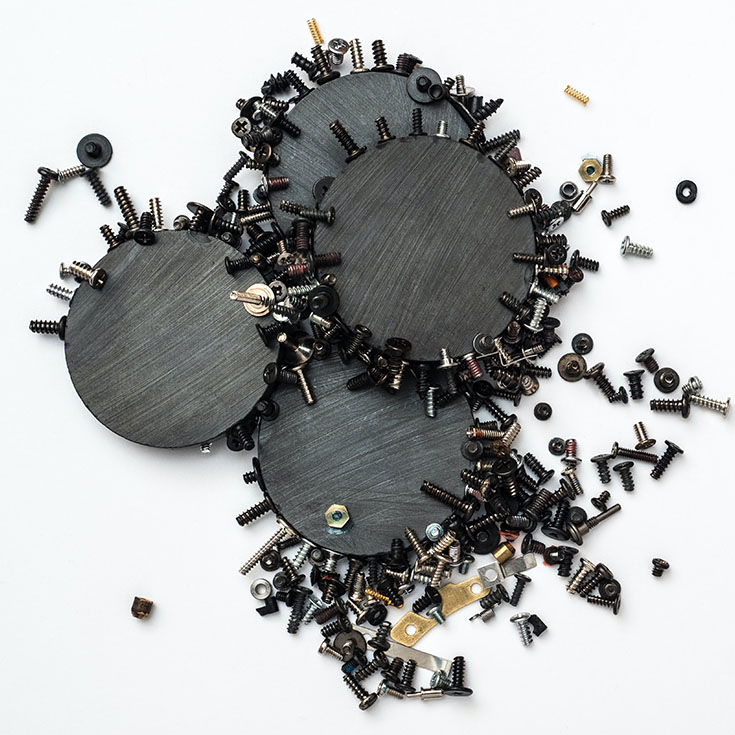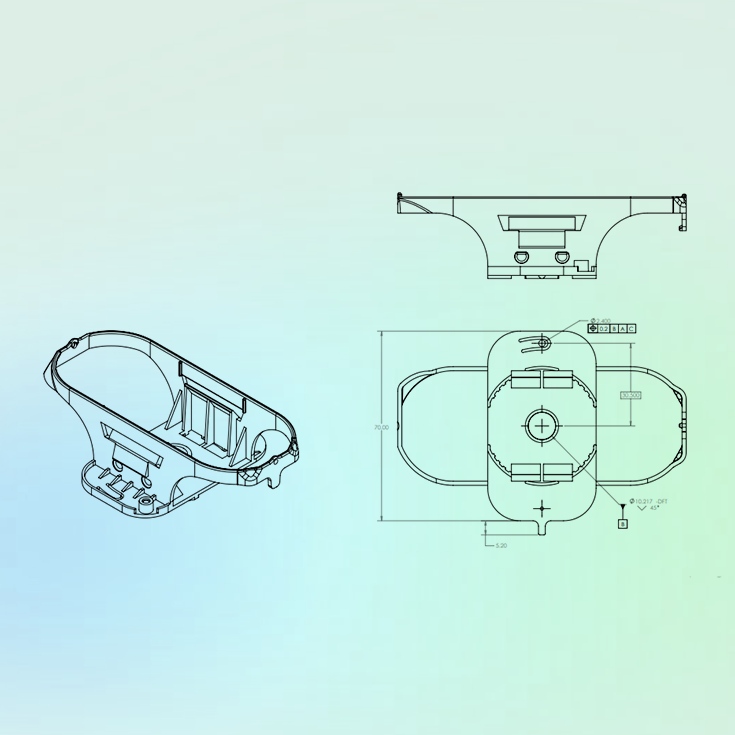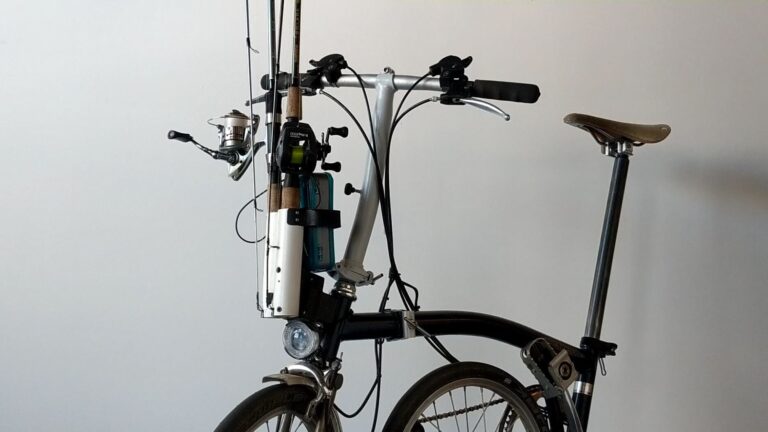Magnets can be amazing when used correctly in a product; however things aren’t as simple as they seem. Let’s look at three applications for using magnets in a product and the key details that make them function well. There are often subtle details that can make the difference between functioning well and falling apart.
Latching:
Magnets can work great as a latch, a common example would be cabinet latches, they’re cheap and effective, however the key to their simple success is the fact that the doors they are used on always come to the fully closed position. The reason this is important is that magnetic force drops off as the distance increases; doubling the separation distance reduces the pull strength by 75%. This means magnets don’t work well to pull doors closed, for instance they would not be effective at pulling against a gasket to for a seal. For applications like that, a mechanical draw-latch should be used.
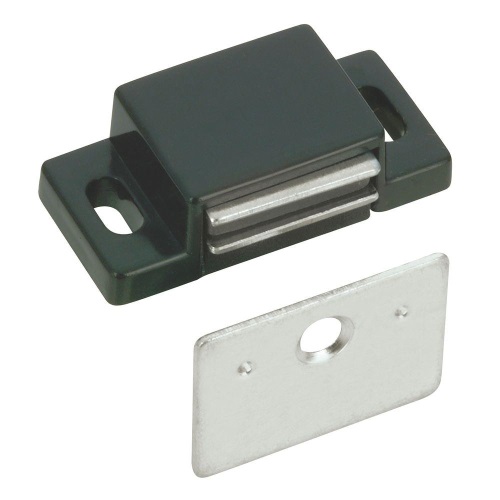
Similarly magnets do not work well for pinching material, people often want to use magnets as a clip for securing a wearable device to clothing, but that means that thicker clothing material will increase the gap distance and means less holding force. A better solution is to use a spring, the reason being that force actually increases with distance, so your device won’t fall off if someone is wearing thick sweater.
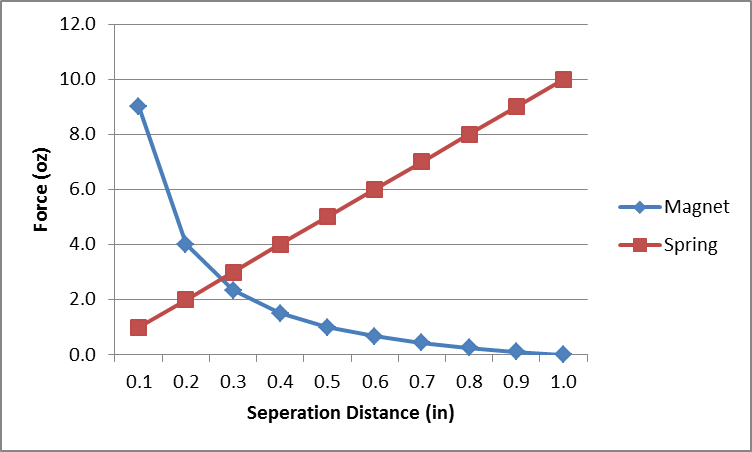
Another thing to consider when using magnets as a latch is that the large force magnets can apply to hold your door closed is equally applied to the mechanism used to attach the magnet to the door. You can’t expect a few drops of glue to hold a magnet with 15lbs of pulling force to a door, so be sure to make your attachment much stronger than the magnetic forces involved. This failure was seen in early Tesla Model S’s where the adhesive used to hold the charging door latch magnet failed, leading to several Tesla’s driving around with the door swung open. Particularly when there’s high temperature fluctuation, it’s a good idea to provide mechanical fastening in addition to an adhesive to avoid problems like this. Engineering firms like us have to deal with these sorts of problems every day.
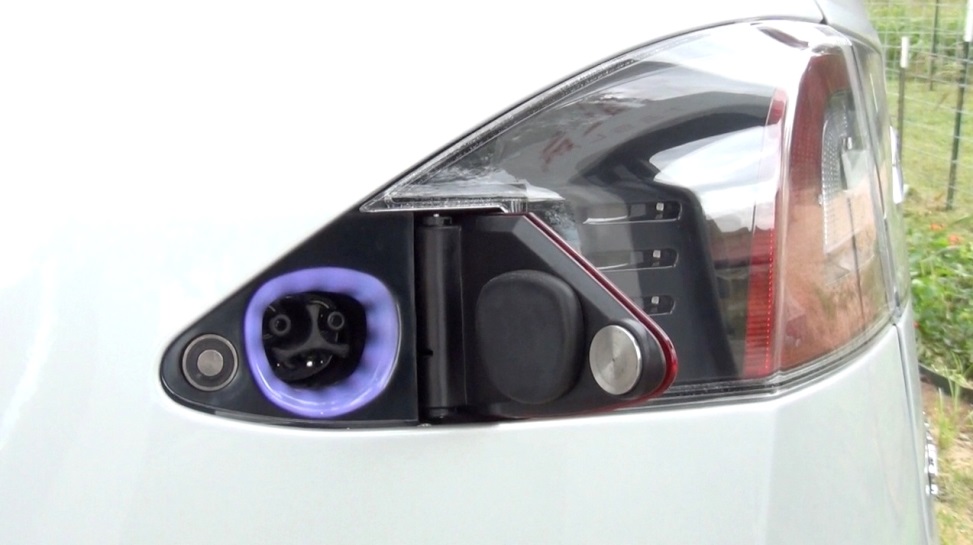
Interlock:
An interlock is a safety device that, by sending an interrupt signal, stops a piece of equipment from operating when a user accesses part of the device (like how your microwave shuts off when you open the door). Typically, this is done with a micro switch that is mechanically actuated, however in some cases, particularly in extreme environments or sanitary applications, these switches need openings that can get gummed up, which is not acceptable. This is where magnets can come in handy. By using a magnetically triggered sensor (hall effect, reed switch, etc) you can keep the switch within the sealed confines of the unit, with just a simple magnet that won’t be compromised or capture debris on the “dirty side”. A great example of this is seen in the Form 2 3d printer; lasers are used to cure a resin so Formlabs uses an interlock to ensure the UV protecting cover is in place so users aren’t exposed to the laser during use. Because the resin has a chance of spilling, a traditional micro switch would not be great option since resin would potentially gum up the mechanism, so by using a magnet and sensor they can keep the device easy to clean. However it should be noted that some medical and industrial applications do not allow for interlocks entirely by magnets, requiring a secondary mechanical feature, so depending on your industry don’t immediately assume magnets are the right interlock answer.
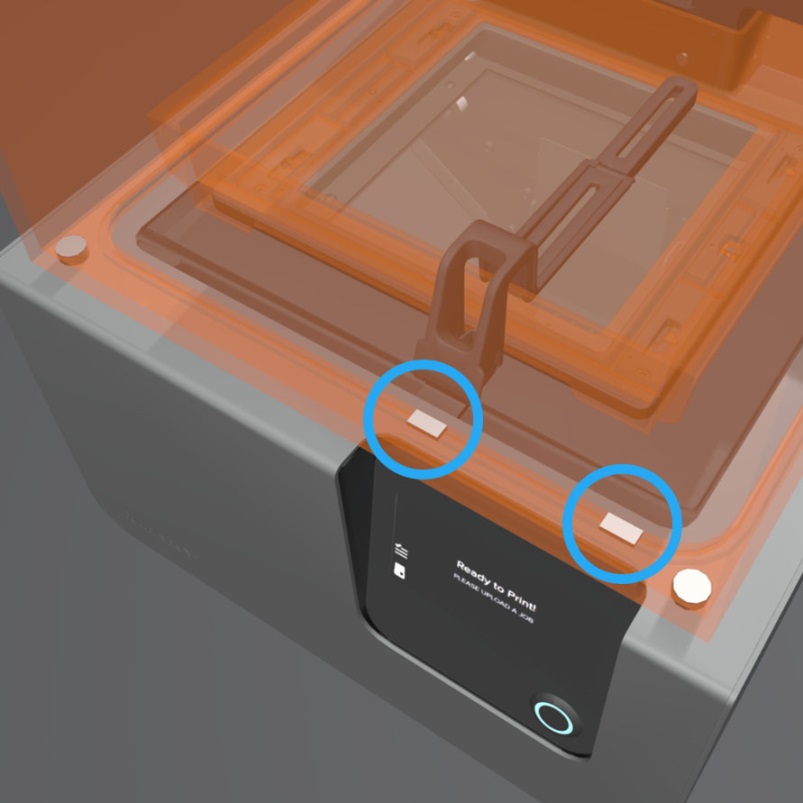
Attachment:
After a few minutes of playing with high strength neodymium magnets it’s very understandable that people would realize their potential for joining modular components. And it can work great, just look at items like magnetic charging cables or tablet covers, however like most magnetic products things are not as simple as they appear. The magnet for charging cables does not provide alignment, it just provides the holding force, alignment that allows the pins to conduct is actually provided by the shape of the connector body; a lip around the edge causes the two pieces to line up. This is important to remember when designing because the nature of magnets means you don’t get great axial alignment, so they cannot be solely relied on if alignment is critical to function.
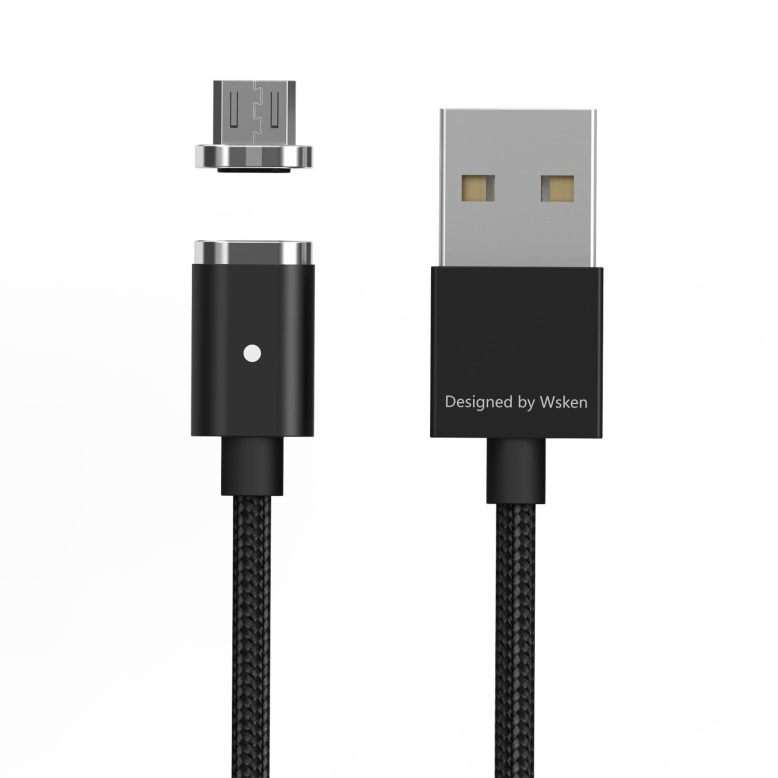
As with most design suggestions there are always exceptions; one glaring example is the magnetic cover used on iPads; they have no mechanical keying features, yet provide both attachment and alignment, how is this done? The answer is using an array of magnets rather than a single magnet, as shown in an ifixit.com teardown the cover is attached using a series of alternating pole magnets of different sizes. The alternating pattern of variable size (known as a barker sequence) essentially gives a much tighter alignment as any misalignment, self corrects due to polarity of the magnets while the different sizes mean you cannot be offset by one magnets width. So why can’t this be used anytime you want to achieve alignment using magnets? The simple answer is cost, more magnets means higher cost; both in terms of the magnets themselves along with the labor required to ensure correct alignment. A possible alternative would be Correlated Magnetics’ “polymagnets” which are essentially arrays of magnets within a single substrate, but the cost is still much higher than simple magnets.
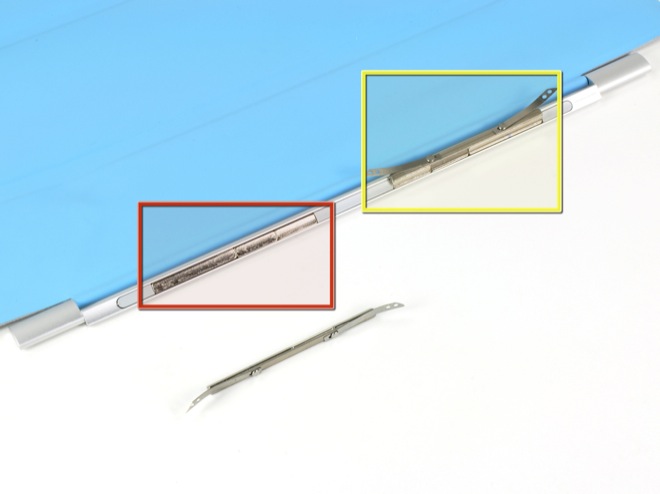
So next time you are in a design review and someone proposes magnets as the magic solution to all your problems make sure they’re not trying to shoe-horn magnets into a role they’re not suitable for. It’s always a good idea to work with teams that have experience with magnets and to prototype early and often as there is so much feel involved with the user experience of magnets. Reach out to an engineering firm near you for more information, or contact us.
